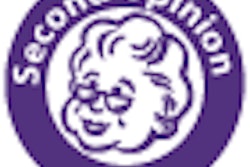Offering radiologists financial incentive to sign their reports quickly improves turnaround times, according to a study conducted by Massachusetts General Hospital researchers and published in the September issue of the American Journal of Roentgenology.
Pay-for-performance measures are becoming increasingly common in clinical practice -- particularly in private practice radiology markets -- as organizations try to increase the value and quality of their medical care in an increasingly competitive environment, according to lead author Giles Boland, MD, vice chair of radiology at Massachusetts General Hospital (MGH) in Boston.
"[Most healthcare organizations] are making a major effort toward improving quality and safety, and rightly so," Boland told AuntMinnie.com. "Report turnaround time is a key quality issue that affects how a patient's medical care is decided."
Boland and colleagues evaluated the effect of a pay-for-performance program on radiology report turnaround times, assessing the program put in place by the Massachusetts General Physicians Organization (MGPO). The program began in January 2007 and concluded in January 2009 (AJR, September 2010, Vol. 195:3, pp. 707-711).
To qualify for the bonus, which was a maximum of $5,000 per year, radiologists were required to meet a mean turnaround time of 24 hours or less from preliminary signature to final signature for all reports signed over an initial one-month period. A year into the initiative, the turnaround time target was reduced to eight hours, except for neurointerventional radiology and neuroradiology reports, which remained at 24 hours.
The study designated three report turnaround times for each radiologist and each of 11 subspecialty radiology divisions at MGH:
- Exam completion (C) to final signature (F)
- Exam completion (C) to preliminary signature (P)
- Preliminary signature (P) to final signature (F)
The study periods measured were three months before the program was instituted (baseline), immediately after the program was introduced (immediate period), and two years after the program had ended (postperiod).
"The primary goal of the pay-for-performance program was to provide radiologists with an incentive to reduce the preliminary signature to final signature component of the radiology report turnaround time cycle because this was directly under the control of the participating radiologist," Boland and colleagues wrote.
Eighty-one radiologists were included in the study and made final signatures on 99,959 reports during the baseline period, 104,673 reports during the immediate period, and 91,379 reports during the postperiod.
Mean times for exam completion to final signature, exam completion to preliminary signature, and preliminary signature to final signature all decreased dramatically from baseline to immediate to postperiods; reduction in report turnaround time was statistically significant for each time period. Similar results were found by division (except for C to F for nuclear and neurovascular radiology from baseline to immediate period, as well as C to P from baseline to postperiod for cardiac radiology).
Report turnaround time (hours)
|
Although it is highly likely that the pay-for-performance incentive directly affected staff physician behavior, particularly for the P to F component, it's not completely clear that physician behavior changed via the financial incentive alone, the authors wrote. Other factors that were not included in the study's scope -- such as formal discussion in the department of the importance of reducing turnaround times, or peer pressure to comply -- could also have contributed to the improved report turnaround times.
Of course, no matter what the incentive, there will always be outliers, Boland said.
"A good number of people get the message [through pay-for-performance measures]. But then, a lot of people don't," Boland said. "There are always a few who continue to sign reports on their own time frame, regardless."
Finally, the study showed that the effect of the payment incentive program was more profound two years after it had been introduced, rather than during the immediate period, suggesting that it can take time for the full impact of such a program to manifest, Boland and colleagues wrote. And the incentive was relatively small compared to radiologists' salaries -- implying that incentives don't have to be huge to have effect. But they probably should be positive, he said.
"Someone e-mailed me [in response], saying, 'This is all very well, Dr. Boland, but what about the other way around? What about taking pay away as an incentive instead?' " he said. "I replied that it's always better to try positive incentive rather than negative."
By Kate Madden Yee
AuntMinnie.com staff writer
August 31, 2010
Related Reading
Want to reduce report turnaround time? Try pay-for-performance, February 9, 2009
Web-based radiology dashboard aids in practice management, December 1, 2008
ED report turnaround times drop with speech recognition, November 19, 2008
Speech recognition shrinks report turnaround time, May 29, 2008
Voice recognition key to fast report turnaround, April 24, 2008
Copyright © 2010 AuntMinnie.com




















